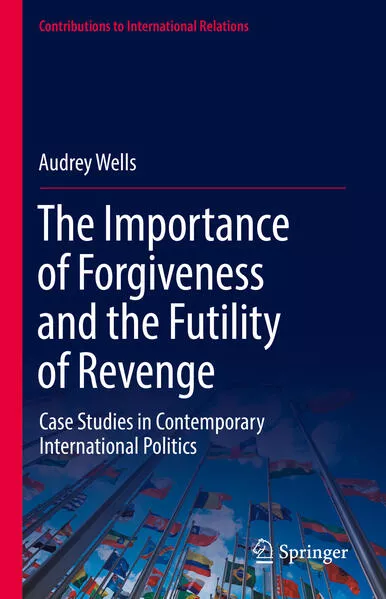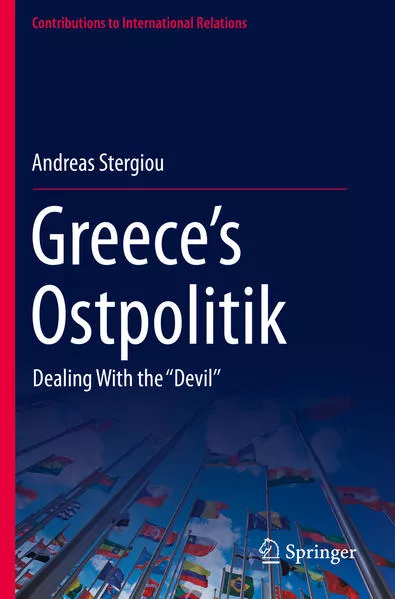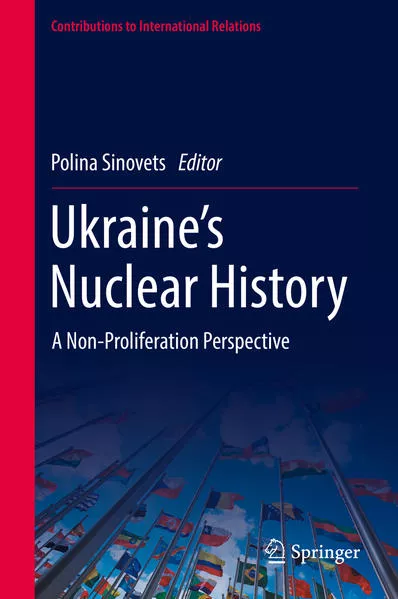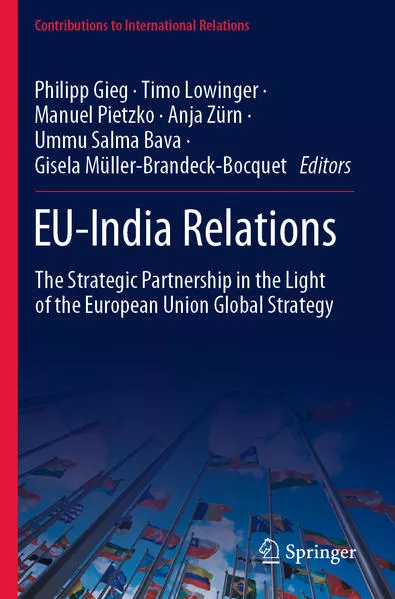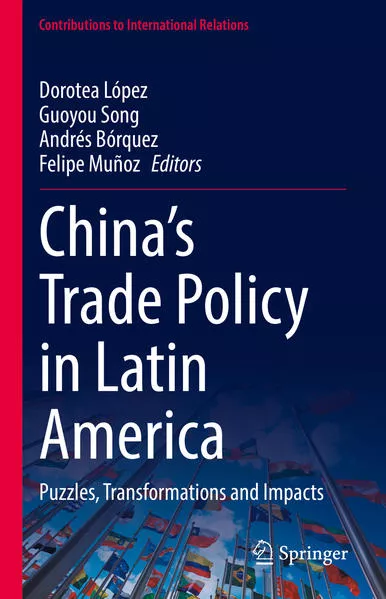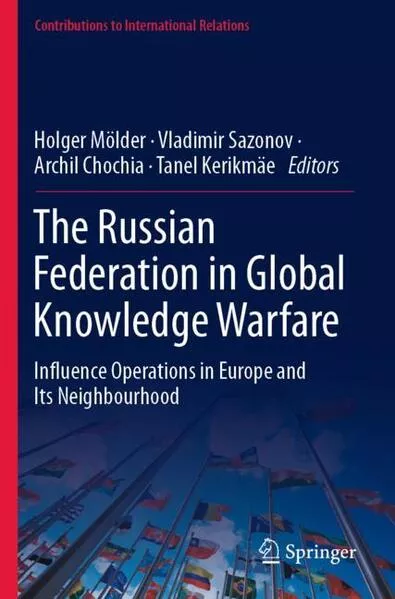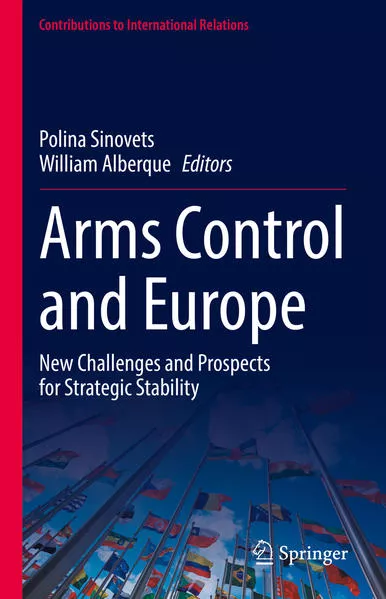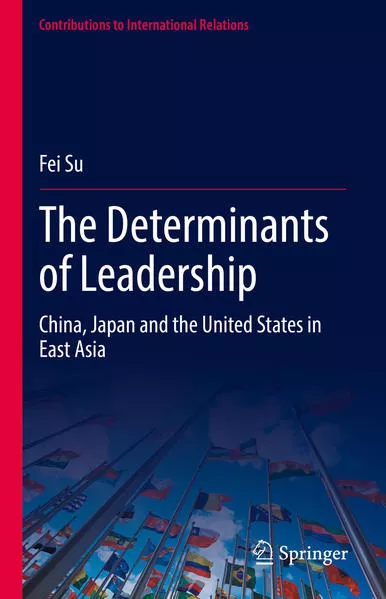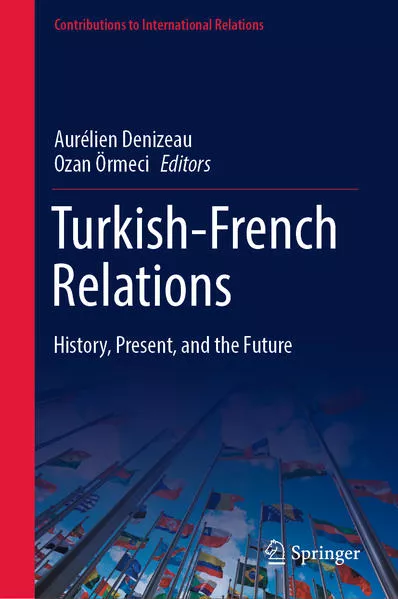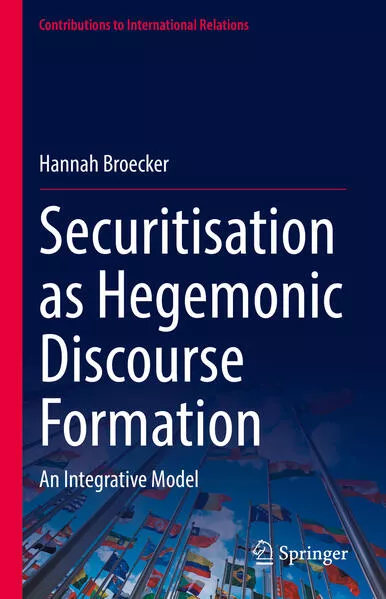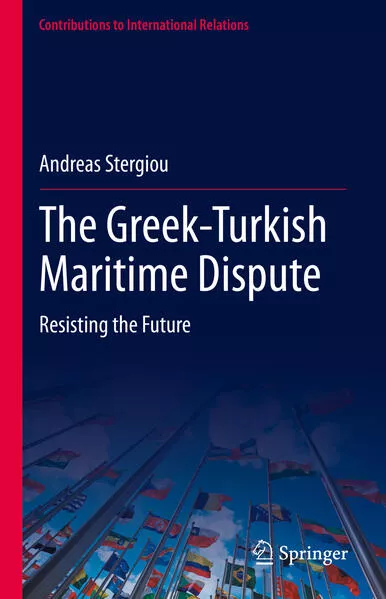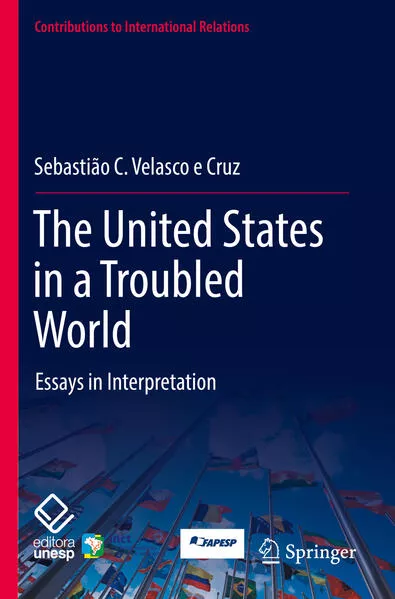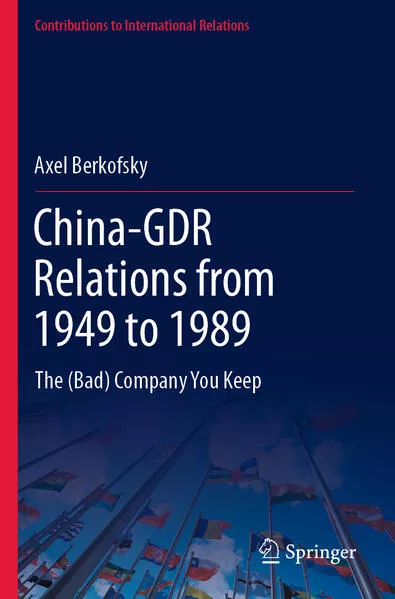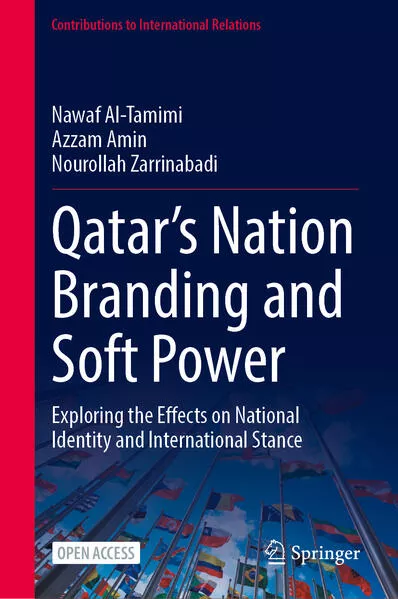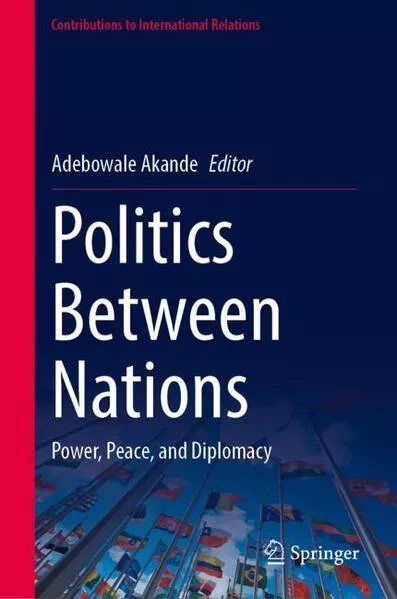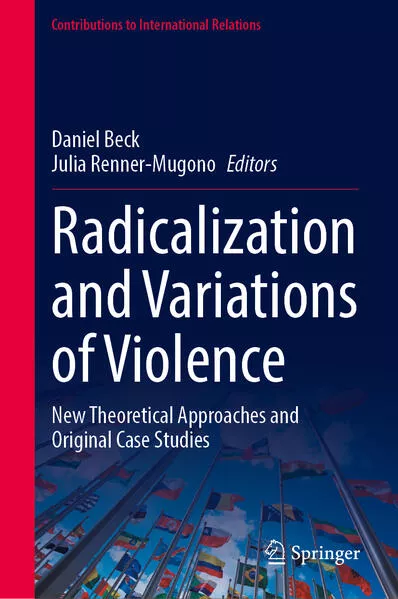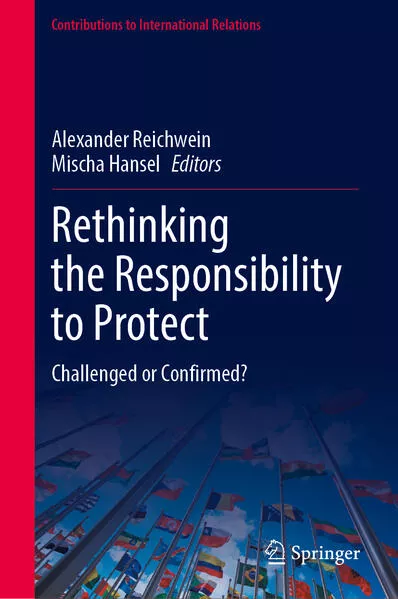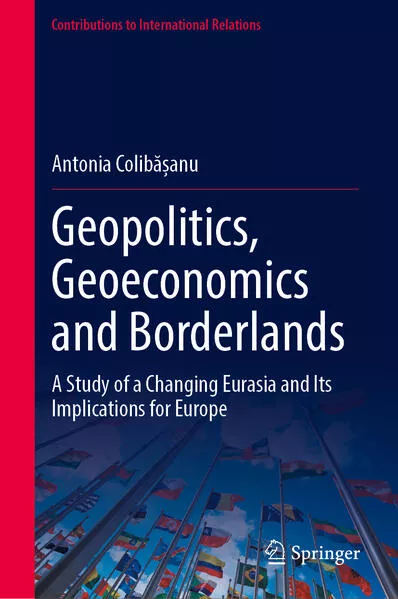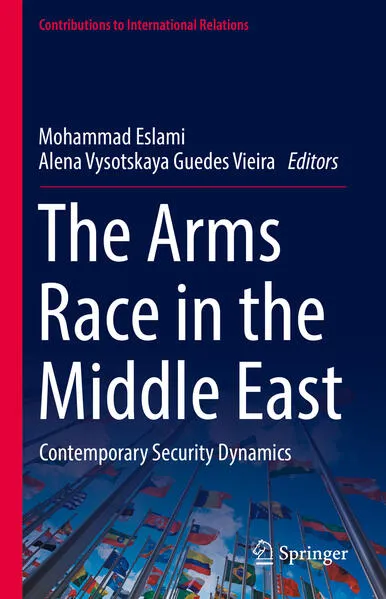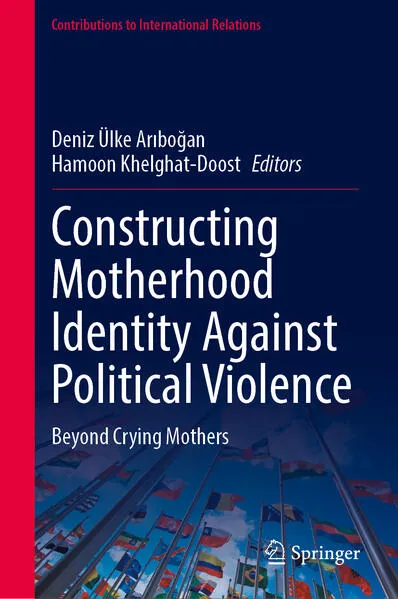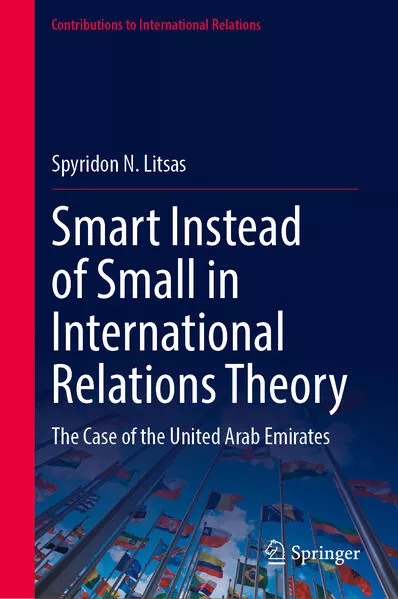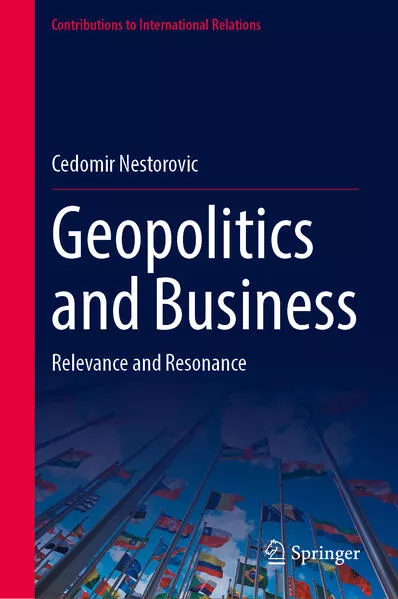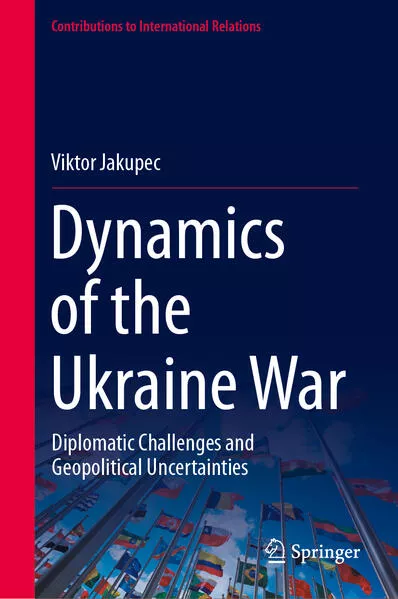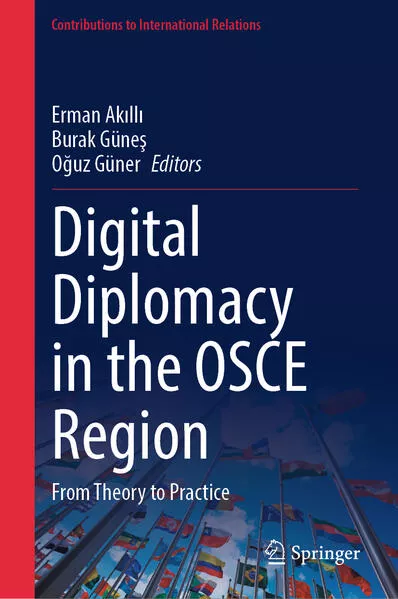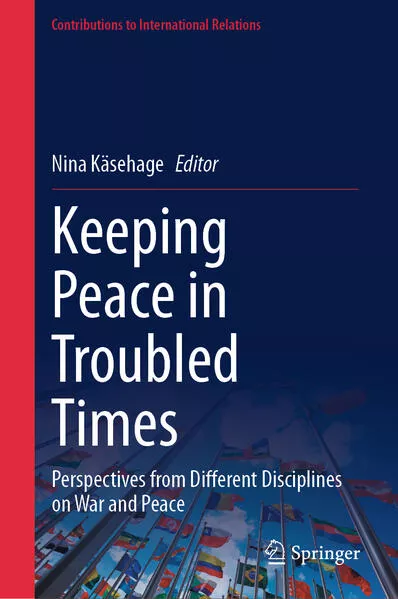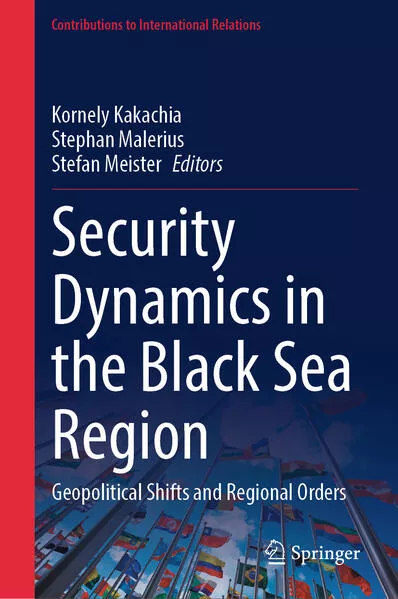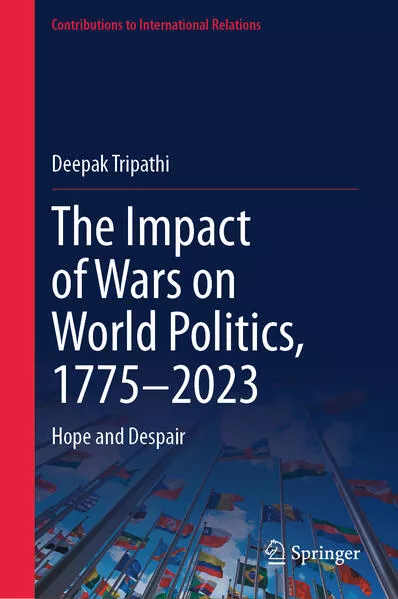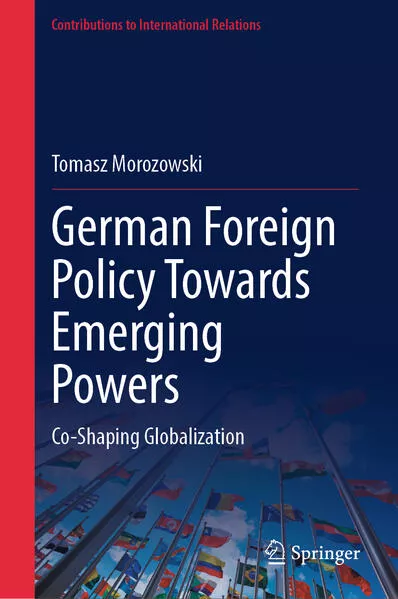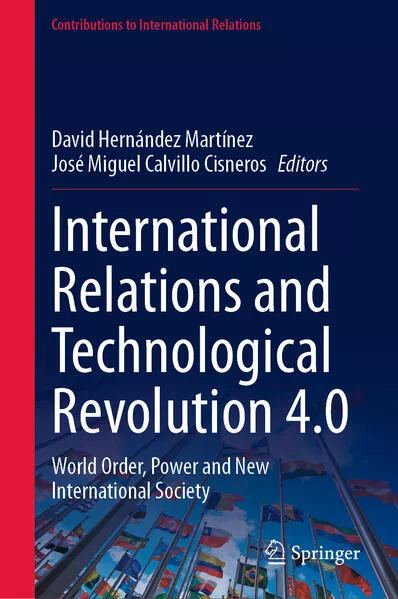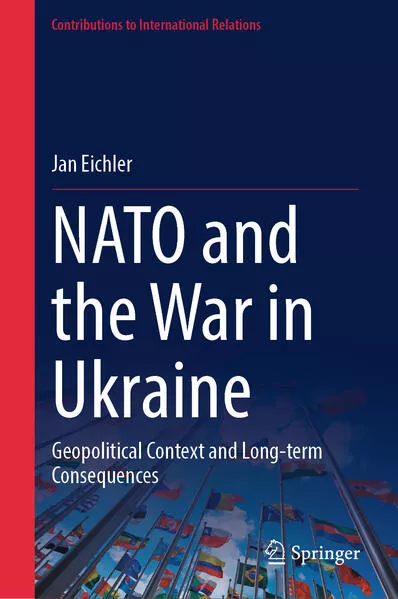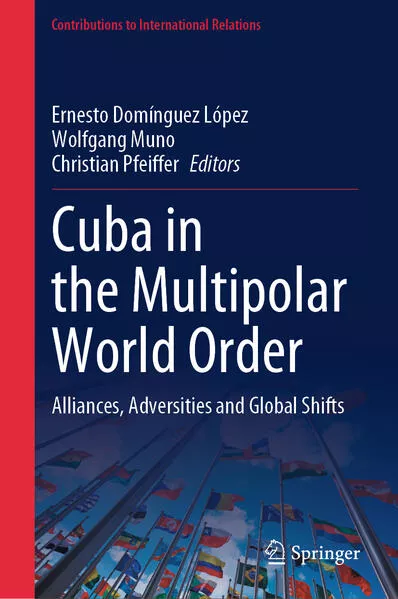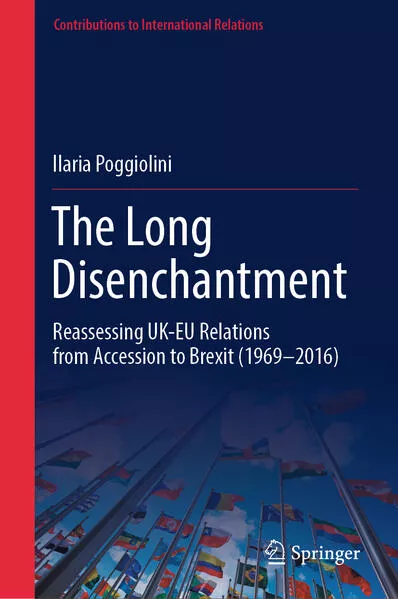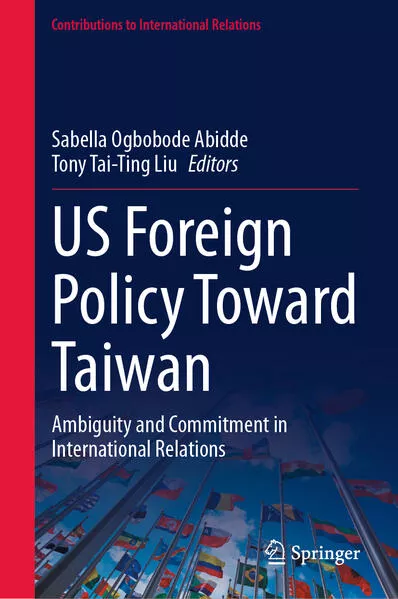Chronologie aller Bände (1 - 37)
Die Reihenfolge beginnt mit dem eBook "The Importance of Forgiveness and the Futility of Revenge". Wer alle eBookz der Reihe nach lesen möchte, sollte mit diesem Band von Audrey Wells beginnen. Der zweite Teil der Reihe "EU-India Relations" ist am 01.03.2022 erschienen. Mit insgesamt 37 Bänden wurde die Reihe über einen Zeitraum von ungefähr 3 Jahren fortgesetzt. Der neueste Band trägt den Titel "Digital Diplomacy in the OSCE Region".
- Anzahl der Bewertungen für die gesamte Reihe: 7
- Ø Bewertung der Reihe: 4.3
- Start der Reihe: 01.01.2022
- Neueste Folge: 02.04.2025
Diese Reihenfolge enthält 35 unterschiedliche Autoren.
- Autor: Wells, Audrey
- Anzahl Bewertungen: 0
- Ø Bewertung:
- Medium: E-Book
- Veröffentlicht: 01.01.2022
- Genre: Politik
The Importance of Forgiveness and the Futility of Revenge
Forgiveness is important in international politics because it can save thousands of lives. Its opposite, vengefulness, has played a significant part in various wars of the 20th and 21st centuries. These conflicts are examined in this book, showing how forgiveness could have avoided the tremendous ensuing bloodshed.
Despite its importance, in the context of international relations, forgiveness as a means of preventing the outbreak of war (as opposed to facilitating reconciliation after conflicts) has largely been neglected as a subject of study. Indeed, it has also been ignored by politicians, as a result of which there are few examples of forgiveness to study compared with those of revenge. This book reflects this reality, but also seeks to change it by raising public awareness of the importance of forgiveness in international affairs and the need to demand that political leaders explore this avenue.
The book also provides a succinct, informative guide to the background of today’s international affairs. Each chapter can be read independently and highlights either forgiveness in action or the futility and loss of life caused by vengefulness, demonstrating where and how forgiveness could have made a dramatic difference.- Autor: Stueber, Julian
- Anzahl Bewertungen: 0
- Ø Bewertung:
- Medium: Buch
- Veröffentlicht: 12.01.2022
- Genre: Politik
The Trade-Security Nexus in EU External Action
- Autor: Stergiou, Andreas
- Anzahl Bewertungen: 0
- Ø Bewertung:
- Medium: Buch
- Veröffentlicht: 02.02.2022
- Genre: Politik
Greece’s Ostpolitik
The book examines the rapprochement between Greece and Eastern Europe during the Cold War. ''Ostpolitik'', which translates to ‘‘Opening to the East’’ is used to describe the policy of conducting affairs with the Soviet Bloc. Using primary sources from Greece, Eastern European States, Cyprus, NATO, the United States, Germany and United Kingdom, this book provides historical and foreign policy analysis of a tumultuous period in the Eastern Mediterranean.
The book first illustrates Greece's position in the Cold War confrontation before moving to more detailed analysis of the Eastern Bloc's policies towards Greece and Cyprus with an emphasis in the harmonious relationship between the Greek military dictatorship and the Communist countries (1967-1974). It analyses the U-turn in Greek foreign and defence policy and the replacement of the Communist ''devil'' by a new one, an equally capitalist country and NATO-ally, Turkey. The book also covers Greece's efforts to elicit theCommunist countries' support against a member of its own Western alliance, as well as the NATO response to this existential threat against its coherence.
A comprehensive study of the East-West competition in South-Eastern Europe and the Eastern Mediterranean during the Cold War, this volume is ideal for researchers and students interested in the international relations of twentieth century Europe and the historical background of the still hot Greek-Turkish Conflict.
- Autor: Sinovets, Polina
- Anzahl Bewertungen: 0
- Ø Bewertung:
- Medium: Buch
- Veröffentlicht: 14.02.2022
- Genre: Politik
Ukraine’s Nuclear History
This book presents a comprehensive overview of Ukraine's nuclear history, beginning from its experiences within the Russian Empire in the early 20th century, through the Soviet period, to the emergence of Ukraine as an independent state that inherited the world’s third-largest nuclear arsenal.
The book discusses the development of the nuclear infrastructure on Ukrainian soil and offers a rich and nuanced background of how Ukraine became an important and integrated part of the Soviet nuclear infrastructure. It further analyzes Ukraine's nuclear disarmament based on extensive primary source material and places the Ukrainian nuclear reversal process in a larger international political context where Russia´s, the United States, and other players´ actions are interpreted in the light of the impact on the current nuclear non-proliferation regime. Finally, the book presents the nuclear-related development after the nuclear disarmament. It describes the integration of Ukraine into the international community and the role of nuclear power in the energy mix of the nation today. Concluding, Ukraine´s adaptation to the new security situation after the Russian annexation of Crimea is described and discussed.
This volume is a must-read for scholars, researchers, students, and policy-makers interested in a better understanding of Ukraine's nuclear history, the political background of the conflict in Eastern Ukraine, as well as of security studies and international relations in general. The work on this book has been supported by the Swedish Radiation Authority (SSM) in the Nuclear History of Ukraine Project (2015-2019).
- Autor: Gieg, Philipp
- Anzahl Bewertungen: 0
- Ø Bewertung:
- Medium: Buch
- Veröffentlicht: 01.03.2022
- Genre: Politik
EU-India Relations
India and the European Union bear a particular responsibility: as international relations change, not least because of the global COVID-19 pandemic, the two largest democracies in the world have the unique potential to jointly demonstrate that trusting cooperation and mutual understanding are both indispensable and fruitful—all the more so in the context of increasing national egoism and disregard for the fundamental principles of multilateralism.
This realisation is not new. Believing in the necessity and mutual benefit of close cooperation, India and the EU struck a strategic partnership in 2004. But resounding success in forging closer bilateral ties and promoting an inclusive, rules-based global order has proved elusive. Since 2016, however, the EU’s Global Strategy has offered new opportunities for a restart of European foreign policy, envisaging new partnerships and recalibrating existing ones. On India’s part, too, changing stances have presented new openings—withNew Delhi criticising protectionism and calling for a strengthening of multilateralism.This timely book scrutinises the status quo and the future potential of revitalised EU-India relations. By exploring and analysing conceptual approaches to and key dimensions of the strategic partnership, including trade, climate policy and development cooperation, it evaluates the prospects for future cooperation. Lastly, it offers policy recommendations for advancing the partnership between India and the EU.
- Autor: López, Dorotea
- Anzahl Bewertungen: 0
- Ø Bewertung:
- Medium: Buch
- Veröffentlicht: 01.07.2022
- Genre: Politik
China’s Trade Policy in Latin America
While the first part of this book reviews China and Latin America trade policies, the second part explores China's view of Latin America. In a third part of the book, the contributions provide a deeper look into the trade relations between China and the countries of Peru, Costa Rica, Mexico, and the United States. The fourth part of the volume focuses on the emerging trade agenda between the two regions. Finally, the fifth part of the book discusses the trade challenges between China and Latin American and Caribbean countries.
The book will appeal to scholars of international relations, economics, and political science, as well as policy-makers interested in a Chinese and Latin American perspective on trade policy in general, and on China's trade policy in the region in particular.
- Autor: Mölder, Holger
- Anzahl Bewertungen: 2
- Ø Bewertung: 5.0
- Medium: Buch
- Veröffentlicht: 26.07.2022
- Genre: Politik
The Russian Federation in Global Knowledge Warfare
This book examines Russian influence operations globally, in Europe, and in Russia’s neighboring countries, and provides a comprehensive overview of the latest technologies and forms of strategic communication employed in hybrid warfare. Given the growing importance of comprehensive information warfare as a new and rapidly advancing type of international conflict in which knowledge is a primary target, the book examines Russia’s role in Global Knowledge Warfare.
The content is divided into three parts, the first of which addresses conceptual issues such as the logic of information warfare, the role of synthetic media, and Russia’s foreign policy concepts, including the impact of the COVID-19 pandemic on influence operations. The second part analyzes technological, legal and strategic challenges in modern hybrid warfare, while the third focuses on textual, cultural and historical patterns in information warfare, also from various regional (e.g. the Western Balkans, Romania, Ukraine, and the Baltic) perspectives. The book is primarily intended for scholars in the fields of international relations, security and the military sciences who are interested in Russian foreign policy and influence operations, but also their impact on the global security environment.
- Autor: Sinovets, Polina
- Anzahl Bewertungen: 0
- Ø Bewertung:
- Medium: Buch
- Veröffentlicht: 09.08.2022
- Genre: Politik
Arms Control and Europe
Divided into three parts, the book presents timely analyses on (1) US, Russia: New Challenges and Strategic Stability in Europe; (2) Extended Deterrence and Arms Control in Europe; and (3) Regional Dimensions of Strategic Stability in Europe. It further offers perspectives from and case studies on different countries, such as Ukraine, France, Germany, the United Kingdom, the USA, Turkey, Poland, and Romania.
This book is a must-read for scholars for international relations, as well as policy-makers interested in a better understanding of the changing international security architecture, Russia's strategy, arms control, nonproliferation, and the future of nuclear deterrence.
- Autor: Su, Fei
- Anzahl Bewertungen: 0
- Ø Bewertung:
- Medium: Buch
- Veröffentlicht: 26.08.2022
- Genre: Politik
The Determinants of Leadership
The book features empirical evidence in six case studies, covering topics such as the successful Chinese endeavor of South Korea joining the Chinese initiative for the Asian Infrastructure and Investment Bank (AIIB), the failed US attempt to prevent South Korea from doing so, the US's success to convince Japan to join the Trans-Pacific Partnership (TPP), the failed Japanese strive for winning South Korea's support for Japan’s bid for a permanent seat at the UN Security Council (UNSC), the Chinese failure at obtaining the Philippines’ backing of the Chinese aspirations in the South China Sea (SCS) during the Aquino Presidency, and, finally, the Chinese success one the same effort during the Duterte presidency.
The book will appeal to students, scholars, and researchers of international relations interested in a better understanding of leadership determinants in East Asia, Global Power Shift, foreign policy, as well as East Asian economic and security dynamics.
- Autor: Akaha, Tsuneo
- Anzahl Bewertungen: 0
- Ø Bewertung:
- Medium: Buch
- Veröffentlicht: 27.08.2022
- Genre: Politik
Trump’s America and International Relations in the Indo-Pacific
- Autor: Denizeau, Aurélien
- Anzahl Bewertungen: 0
- Ø Bewertung:
- Medium: Buch
- Veröffentlicht: 03.09.2022
- Genre: Politik
Turkish-French Relations
This book explores both the history and current diplomatic and foreign policy challenges in Turkish-French relations. By critically analyzing Turkish and French government and archival documents, as well as other primary sources, it reviews the evolution of Turkish-French relations and offers a better understanding of various diplomatic issues, foreign policy decisions, and geopolitical questions. Furthermore, it sheds new light on the significance of domestic political demands for foreign policy decisions and the importance of mutual perceptions in shaping the two countries’ relations.
The book is divided into three parts, the first of which studies the history of Turkish-French relations, including the Ottoman Empire’s trade relations with France, France’s relations with the modern Republic of Turkey, and relations during the Cold War and its aftermath. The second part analyzes various dimensions, including diplomatic challenges, the two countries’ foreign policy concepts, geopolitical aspects, economic and trade relations, and their cultural relationship. In turn, the third part presents case studies on more specific issues related to Franco-Turkish relations, including Turkey’s EU accession process, the Armenian and Kurdish issues, and French and Turkish perspectives on the MENA region.
- Autor: Broecker, Hannah
- Anzahl Bewertungen: 0
- Ø Bewertung:
- Medium: Buch
- Veröffentlicht: 26.10.2022
- Genre: Politik
Securitisation as Hegemonic Discourse Formation
This book offers a model for understanding securitization in terms of hegemonic discourse formations. It re-thinks the very meaning of security as well as the relationship between the understanding of security in traditional and critical approaches in security studies to find a common denominator between them. Deduced firmly from realist political philosophy and its analytic categories, such as state-based sovereignty, security is presented as a function of discursive formations. Providing a sound discourse-theoretical foundation which includes both linguistic and non-linguistic practices as well as a focus on relationships of power, the book offers a basis for the integration of insights generated by the different approaches to securitisation, and enhances the analytical and explanatory depth of the concept.
As part of its theoretical foundation, the book further presents a fundamentally new image of long-standing theoretical and conceptual challenges within speech-act inspired approaches, including the re-formulation of central analytical categories such as the speaker-audience-context nexus. By explaining securitisation as signifying the boundaries of the construction of meaning, it presents an original understanding of securitisation, which is deeply integrated into the structures of the social construction of meaning. On this basis, the book offers a new understanding of successful securitisation factors and insights into aspects that render specific objects more or less likely for securitisation. The book proceeds to discuss two central aspects of the securitisation debate: The constitution of power, as well as an exploration of the nature of the political and politicisation. An empirical case study on the development-security-nexus offers further insights into the applicability of the theoretical model.This book will appeal to students, researchers, and scholars of political science and international relations (IR) interested in a better understanding of IR theory, realism, critical security studies, and discourse analysis.
- Autor: Stergiou, Andreas
- Anzahl Bewertungen: 0
- Ø Bewertung:
- Medium: Buch
- Veröffentlicht: 04.11.2022
- Genre: Politik
The Greek-Turkish Maritime Dispute
- Autor: Velasco e Cruz, Sebastião C.
- Anzahl Bewertungen: 0
- Ø Bewertung:
- Medium: Buch
- Veröffentlicht: 08.12.2022
- Genre: Politik
The United States in a Troubled World
This book presents an overview of the main changes in the United States' foreign policy in response to the transformations in the international order in the last decades. If, after the end of the Cold War, the USA invested in the universalization of market economy and in the strengthening of its military supremacy, new developments demanded reorientations in the country’s foreign strategy. The controversial military interventions in Afghanistan and Iraq, the 2008 economic crisis, the rise of the BRICs (Brazil, Russia, India and China) and the rise of right-wing populism altered the global political landscape and demanded new responses from the most powerful country in the world.
This volume brings together nine essays in which the founding member of the World International Studies Committee, Sebastião C. Velasco e Cruz, analyzes how the United States’ foreign policy responded to the growing challenges posed by this changing international order, discussing topics such as:- The evolution of the American geopolitical strategy after the end of the Cold War
- How US foreign policy reacted to challenges to security and dilemmas of the international order
- Barack Obama's foreign policy and world politics
- Donald Trump and the rise of populism in the USA
- US relations with BRICs and Latin America
- Autor: Berkofsky, Axel
- Anzahl Bewertungen: 0
- Ø Bewertung:
- Medium: Buch
- Veröffentlicht: 16.12.2022
- Genre: Politik
China-GDR Relations from 1949 to 1989
This book provides an in-depth analysis of the relations between China and the German Democratic Republic (GDR) from 1949 to 1989. These relations were characterized by some “ups” but many more “downs,” e.g. when, in the early 1960s, the Soviet Union ordered its vassal state in East Berlin to begin treating its former socialist comrade and brother-in-arms as an adversary and indeed enemy.
Drawing on a wealth of archival material, especially from the archive of the GDR’s ruling party, this book examines selected issues and elements of East German and Chinese domestic and foreign policy. In order to better grasp the nature and the historical context of the bilateral relationship, it offers detailed insights into the following aspects: 1. the bilateral “honeymoon period” from 1949 to the late 1950s, which was accompanied by the two parties supporting and applauding each other’s oppressive domestic and ill-fated economic policies, including Mao’s Great Leap Forward and the Cultural Revolution; 2. relations during the 1960s, when the “Sino-Soviet Split” defined the quality and level of bilateral animosities; 3. the 1970s, when Beijing replaced socialist comradeship with East Berlin with trade and aid from the US and West Germany; and 4. the resumption of Sino-East German relations in the 1980s and the subsequent period up to the Tiananmen Square protests and the collapse of the GDR in 1989. The book will appeal to historians, political scientists and scholars of international relations, as well as policymakers, diplomats, and others with an interest in this previously under-researched area.
- Autor: Al-Tamimi, Nawaf
- Anzahl Bewertungen: 2
- Ø Bewertung: 3.6
- Medium: Buch
- Veröffentlicht: 14.03.2023
- Genre: Politik
Qatar’s Nation Branding and Soft Power
This book further scrutinizes Qatar’s role in the region and all questions related to this role through the lenses of its nation brand. The book provides explanations for the success of Qatar in absorbing the “shock and awe” in the early stage of the last Gulf crisis, presenting various arguments on how establishing a nation brand helped Qatar to deal with the crisis successfully.
The book follows an original approach that views the Qatari case from a scientific perspective, investigating the art of nation branding. It will appeal to students, researchers, and scholars of international relations, psychology, political science, and journalism, as well as policy-makers interested in a better understanding of soft power, nation branding, Middle East studies, and diplomacy.
- Autor: Akande, Adebowale
- Anzahl Bewertungen: 0
- Ø Bewertung:
- Medium: Buch
- Veröffentlicht: 30.04.2023
- Genre: Politik
Politics Between Nations
This multidisciplinary volume examines the meaning of global conflict and cooperation by international actors that can be caused by dis- or misinformation to people and discusses how to build diplomacy for peace and regional cooperation. The book further identifies boundaries of the relationships among the various governments of the world, transatlantic alliances, international organizations, non-governmental organizations, transnational corporations, and the overall interdependence of nations in the making of the modern world.
Topics discussed in this volume include diplomacy, international relations theory, Eurasia politics, European Union, Brexit, Taliban taking over of Kabul government, and the ongoing Afghanistan conflict, terrorism, ISIS and Al Qaeda, international law, international organizations, interstate and intrastate war, threats and challenges, global civil society, religion, and culture. The volume advances contemporary theories and concepts to explain these issues concerning peoples and cultures in the complex world we live in.
The book is a must-read for students, researchers, and scholars of international relations, political science, political history, political geography, economics, and law in general, as well as diplomacy, political communication, and security studies in particular.- Autor: Beck, Daniel
- Anzahl Bewertungen: 0
- Ø Bewertung:
- Medium: Buch
- Veröffentlicht: 13.05.2023
- Genre: Politik
Radicalization and Variations of Violence
This book focusses on the interaction between different kinds of violence and radicalization. Current research criticizes linear models of radicalization and assumes that individuals are involved in radical actions even without extremist preferences. In recent years, the research on radicalization and the use of violence has increasingly been focused on this phenomenon of individual radicalization. However, radicalization is a manifold phenomenon on various levels and exists in miscellaneous variations.
The book provides an impetus for analysing social situations that contain the potential for the emergence of conflict. This is done through new outlooks on the role of emotions, the influence of narratives and representations, the connection between (non)violence and emancipation and, lastly, new approaches and perspectives on deradicalization.
- Autor: Reichwein, Alexander
- Anzahl Bewertungen: 0
- Ø Bewertung:
- Medium: Buch
- Veröffentlicht: 28.05.2023
- Genre: Politik
Rethinking the Responsibility to Protect
This edited volume critically examines the Responsibility to Protect (R2P) as a guiding norm in international politics. After NATO’s intervention in Libya, against the backdrop of civil wars in Syria and Yemen, and because of the cynical support for R2P by states such as Saudi Arabia, this norm is the subject of heavy criticism. It seems that the R2P is just political rhetoric, an instrument exploited by the powerful states. Hence, the R2P is being challenged. At the same time, however, institutional settings, normative discourses and contestation practices are making it more robust. New understandings of responsibility and the politics of protection are creating new normative spaces, patterns of legitimacy, and norm entrepreneurs, thereby reinforcing the R2P.
This book’s goals are to discuss the R2P’s roots, institutional framework, and evolution; to reveal its shortcomings and pitfalls; and to explore how it is exploited by certain states. Further, it elaborates on the R2P’s strength as a norm. Accordingly, the contributions presented here discuss various ways in which the R2P is being challenged or confirmed, or both at once. As the authors demonstrate, these developments concern not only diplomatic communication and political practices within international institutions, but also to normative discourses.
Furthermore, the book includes chapters that reevaluate the R2P from a normative standpoint, e.g. by proposing cosmopolitan standards as a guide for states’ external behavior. Other contributors reassess the historical evidence from U.N. negotiations on the R2P principle, and the productive or restrictive role of institutions. Discussing new issues relating to the R2P such as global and regional power shifts or foreign policy, as well as the phenomenon of authoritarian interventionism under the R2P umbrella, this book will appeal to all IR scholars and students interested in humanitarianism, norms, and power. By analyzing the status quo of the R2P, it enriches and broadens the debate on what the R2P currently is, and what it ought to be.
- Autor: Colibășanu, Antonia
- Anzahl Bewertungen: 0
- Ø Bewertung:
- Medium: Buch
- Veröffentlicht: 12.08.2023
- Genre: Politik
Geopolitics, Geoeconomics and Borderlands
This book discusses the emerging threats to European stability in different borderland regions, from the Greater Middle East to the Eastern Mediterranean, the Balkans and the Black Sea. It highlights the specific geopolitical risks that could, left unchecked, have global repercussions. The book shows how recent events have exasperated underlying problems that have been slowly destabilizing each of these regions for years. It also looks at the geopolitical constraints and objectives of the countries within these regions to build a basis for understanding their current and future security challenges.
While doing so, the book discusses the European borderlands in a non-traditional way, proposing a specific framework to study them, going beyond historical analysis and employing a heuristic process and in-depth socio-economic analysis to understand regional power relations and trends. It develops the key concepts of "core borderland" and "geopolitical node" to understand the future challenges that Europe in particular and Eurasia, in general, will face, discussing specific features shaping current affairs and identifying the main drivers - countries and specific regional elements - for the future stability of the borderlands.
This book will appeal to students and scholars of international relations, as well as policy-makers, practitioners, and international organizations interested in a better understanding of current and future challenges at Europe's borderlands and the security risks the European continent faces.
- Autor: Eslami, Mohammad
- Anzahl Bewertungen: 0
- Ø Bewertung:
- Medium: Buch
- Veröffentlicht: 03.09.2023
- Genre: Politik
The Arms Race in the Middle East
This edited volume discusses security policy and strategic policymaking in the Middle East region. Due to its unique geopolitical, geoeconomic and geostrategic features, the Middle East region has been confronted with challenging security issues. Combined with a lack of an efficient regional security regime this has led to the formation of a full-fledged arms race. This book draws together contributions from international experts to address the factors that have been contributing to the ongoing formation of an arms race in the Middle East as well as the impact of this phenomenon on the regional and global security environment.
The book is organized in three sections. The first section outlines the contemporary dynamics of the arms race in the Middle East by focusing on its most recent dynamics and their implications for regional and international security. The second section conducts systematic analysis of case studies of country-specific drivers of the armsrace. The third and final section examines the role of external actors in the arms race, evaluating both the responses of regional actors to external interventions as well as the implications of the arms race for extra-regional countries.
- Autor: Arıboğan, Deniz Ülke
- Anzahl Bewertungen: 0
- Ø Bewertung:
- Medium: Buch
- Veröffentlicht: 05.10.2023
- Genre: Politik
Constructing Motherhood Identity against Political Violence
This volume offers a nuanced understanding of female agency in political violence by reviewing and analyzing the political construction of motherhood as a form of social agency against political violence committed by both state and non-state actors in different parts of the world. While the international relations discipline has traditionally viewed the relationship between women and violent actors as an exploitative one, this book demonstrates that taking maternal bodies seriously creates important intellectual space to examine the types and kinds of violence the discipline of IR takes seriously and the types and kinds of resistance practiced by mothers but often overlooked (at least by male/mainstream IR). Focusing on motherhood as an agency of change, this volume will appeal to scholars in the field of gender and international security, think tanks working on political and security affairs, social activists, policymakers, an interested public audience, as well as undergraduate and postgraduate students undertaking study or research associated with gender and political violence.
- Autor: Litsas, Spyridon N.
- Anzahl Bewertungen: 0
- Ø Bewertung:
- Medium: Buch
- Veröffentlicht: 02.12.2023
- Genre: Politik
Smart Instead of Small in International Relations Theory
- Autor: Nestorovic, Cedomir
- Anzahl Bewertungen: 0
- Ø Bewertung:
- Medium: Buch
- Veröffentlicht: 19.12.2023
- Genre: Politik
Geopolitics and Business
This book sheds light on the intricate relationship between geopolitics and business and the essential interdependence between corporations and geopolitics. Despite apparent animosity, practical solutions and theories proposed by geopolitics find resonance within the business world, and vice versa. Concepts like critical theory, disruption, hegemony, strategic rivalry, and cost-effectiveness hold common ground in both realms, even though they have historically been disregarded.
Geopolitical authors have often overlooked the vital role played by businesses in shaping global affairs, while businesses themselves view geopolitics as a risk to be managed. These contrasting viewpoints have given rise to misunderstandings and misconceptions between the two spheres.
The author sets out to bridge the gap between geopolitics and business, exploring how corporations perceive space, state, and power, while also analyzing the influence of classical, critical, and feminist geopoliticson business strategies. This comprehensive analysis reveals that businesses are not mere non-state agents among many, but indeed, the principal non-state agents in geopolitics. The book is an essential read for scholars, researchers, and professionals seeking a deeper understanding of the dynamic interplay between these critical forces.
- Autor: D'Amato, Silvia
- Anzahl Bewertungen: 0
- Ø Bewertung:
- Medium: Buch
- Veröffentlicht: 28.12.2023
- Genre: Politik
International Relations and Area Studies
Discover the intricate tapestry of international politics and governance with this book. The book delves into the diverse nature of globally significant actors and systems across multiple regions. From Africa to Asia, Europe to the Middle East, this collection of thought-provoking case studies explores the role of regional actors in the international system.
Combining theoretical innovation with empirical analysis, this volume expands the boundaries of International Relations (IR) and Area Studies (AS), showcasing their interconnections throughout history and in contemporary contexts. Through illuminating case studies drawn from the fields of "Comparative Regionalism" and "Non-Western IR Theory," the book sheds light on pressing international events. Unpacking complex questions, the contributors examine the application of IR scholarship to global events and provide fresh insights into political dynamics, conflicts, and state instability across various regions. By offering a comparative perspective on threats, political contestation, and security policies, this book challenges existing perspectives and enriches the debate.
With its methodological and epistemological explorations, this book is an indispensable resource for scholars and students of international relations and security studies, as well as researchers focusing on specific world areas. Embark on a captivating journey through the multifaceted landscape of global affairs.
- Autor: Jakupec, Viktor
- Anzahl Bewertungen: 0
- Ø Bewertung:
- Medium: Buch
- Veröffentlicht: 02.04.2024
- Genre: Politik
Dynamics of the Ukraine War
This book offers a contemporary, cutting-edge, and advanced critical analysis of the first twenty months of the war between Russia and Ukraine. Following a realist approach and with a focus on political discord, economic sanctions, and media limitations, the book sheds light onto the deadlock between the conflicting parties. It dissects the diplomatic endeavors and missteps, varying political perspectives, Western support strategies, and the intricate global dynamics that triggered this existential crisis.
The critical assessment of political antecedents, including the Budapest Memorandum, the Bucharest Summit Declaration, and the Minsk Agreements 1 and 2, uncovers hidden political motives aimed at setting the stage for a proxy war. Additionally, the book scrutinizes the financial dimensions of the conflict, strategies for post-conflict reconstruction, and the emerging Zeitenwende phenomenon reshaping the geopolitical landscape of the Global North.
This book's insights suggest a potential shift towards a new multipolar global order, representing a significant realignment in the distribution of geopolitical and geo-economic influence. A must-read for scholars and academics seeking a profound understanding of this pivotal conflict and its far-reaching implications.
- Autor: Akıllı, Erman
- Anzahl Bewertungen: 0
- Ø Bewertung:
- Medium: Buch
- Veröffentlicht: 04.04.2024
- Genre: Politik
Digital Diplomacy in the OSCE Region
This edited volume examines the practices and applications of digital diplomacy in the OSCE Region. As a security organization, the Organization for Security and Cooperation in Europe (OSCE) prioritizes its member states’ cyber security and cyberspace activities. The book examines two key areas where digital diplomacy challenges traditional diplomatic practices of the OSCE member States: institutional adaptation and policy innovation in the OSCE Region. It (1) investigates how capable and motivated foreign ministries are at the institutional level to shift to digital diplomacy, and (2) explores how digital diplomacy affects the fundamental diplomatic tasks of representation, communication, and relationship management at the policy level.
Technological advances in IT and the Internet's widespread introduction in the wake of the 2000s provided new territories to conquer for states to pursue their interests. Moreover, technological developments and media attention enhanced information flow and communication through new platforms like online encyclopedias (i.e., Wikipedia), video-sharing sites (i.e., YouTube), and social media platforms (i.e., Facebook, Instagram, Twitter). Because of these transformations, public opinion became influential in diplomacy, and a greater need to include foreign publics as part of foreign policy goals emerged.
Introducing case studies from several OSCE countries, presented by an international group of authors, this book provides a timely response to current affairs and policy debates by providing pluralistic perspectives from different countries and disciplines, such as international relations, political science, international law, and political economy). It will appeal to students, researchers, and scholars of the aforementioned disciplines, as well as policy-makers and practitioners interested in a better understanding of digital democracy and digital diplomacy in the OSCE region.
- Autor: Käsehage, Nina
- Anzahl Bewertungen: 0
- Ø Bewertung:
- Medium: Buch
- Veröffentlicht: 02.06.2024
- Genre: Politik
Keeping Peace in Troubled Times
This interdisciplinary anthology offers both theoretical reflections and empirical data on past, present and possible future war and crisis situations. In addition, against the background of the authors' academic and practical experience in the field of international political observation and consultancy, proposals are formulated for peacekeeping in crisis regions and with regard to extreme environments. Furthermore it addresses sensory and aesthetic perceptions of war and peace. Unlike other books on the subject, this contributed volume seeks solutions for lasting peace from various fields that could help improve quality of life for people around the world – especially in heterogeneous societies, which are often shaken by religious, ethnic or political crises.
- Autor: Juška, Žygimantas
- Anzahl Bewertungen: 0
- Ø Bewertung:
- Medium: Buch
- Veröffentlicht: 04.06.2024
- Genre: Politik
Soft Power of the European Union
This book sheds light on the complexities of the European Union's (EU) influence in a world dominated by global power politics. Written by an EU diplomat, it explores the dynamic landscape of soft power, with a focus on key regions such as the Western Balkans, Eastern Partnership, Southern Neighborhood, and Sub-Saharan Africa. Presenting the economic, diplomatic, and cultural dimensions, the book critically evaluates the EU's effectiveness in shaping behavior amid intensifying global power competition.
With a unique perspective gained from on-the-ground experience in Kosovo, Ukraine, and Rwanda, the author navigates the EU's responses to challenges, including Russia's hard power approach. A must-read for policymakers and diplomats, this book blends academic analysis with practical insights, offering valuable lessons and recommendations for mastering the language of power in today's global politics. Ideal for students and professionals, it provides a comprehensive explorationof EU foreign policy dynamics.
- Autor: Kakachia, Kornely / Malerius, Stephan / Meister, Stefan
- Anzahl Bewertungen: 0
- Ø Bewertung:
- Medium: Buch
- Veröffentlicht: 16.07.2024
- Genre: Politik
Security Dynamics in the Black Sea Region
This book examines the geopolitical shifts triggered by Russia's military aggression against Ukraine from February 2022 onwards. This conflict has catalyzed unprecedented transformations in the Black Sea region's security landscape, reshaping the foundations of international relations. Presenting various case studies on key players such Russia, Ukraine, the USA, Turkey, the European Union, and NATO, the book presents a comprehensive analysis of the multifaceted impacts stemming from the conflict, focusing on three critical dimensions: military, economic, and human security. The contributions examine whether and how the conflict has not only magnified security challenges but also spurred resistance by Ukrainian forces and society. It also examines the impact of comprehensive economic sanctions and Western military and financial assistance to Ukraine on Russia's military capabilities and regional balance of power.
The book sheds new light on the intricate interplay between state actors, multilateral institutions, and emerging regional orders. By dissecting the impact on governance models, rule of law, and human security, the book illuminates the far-reaching consequences of the conflict beyond military dynamics. With a keen focus on the emergent European security order, the book underscores the need for novel strategies to address the evolving security complexities in the Black Sea region. This book is a must-read for those seeking insights into the changing face of European security and the emergence of a new geopolitical order.
- Autor: Tripathi, Deepak
- Anzahl Bewertungen: 0
- Ø Bewertung:
- Medium: Buch
- Veröffentlicht: 24.09.2024
- Genre: Politik
The Impact of Wars on World Politics, 1775–2023
In a study of cyclical history, this book presents a grand sweep of modern history and how decades of savage wars, and turbulence, led to a brief era of exhilaration and hope, followed by despair in the new century. The collapse of the Berlin Wall (1989) and the Soviet Union (1991), marking the end of the Cold War, were celebrated with great euphoria.
The book points out that the defeat of Soviet communism by the Western allies was one of the most consequential outcomes of great power conflict in the twentieth century, comparable to the defeat of fascism in the Second World War, and of the Central Powers led by Germany and Austria-Hungary in the First World War.
However, optimistic predictions of a peaceful and orderly world after the Cold War proved wrong, and new challenges emerged across the globe such as international and regional conflicts, climate change, and mass migration. The book explains how the initial excitement and hope after the collapse of the Soviet Union turned to new challenges, and despair, continuing the cycle of history.
Tripathi's scholarly rigor, combined with his journalistic clarity, makes this book a landmark publication that stands out for its depth, relevance, and the urgent message it conveys about the necessity of learning from history to navigate the challenges of the future.
Ashok Swain, Professor & Head, Department of Peace and Conflict Research, Uppsala University
This book is a strong, well-written, and explorative testimony of war and conflict, their roots and dynamics, as well as consequences and impact on politics and human lives.
Nora Sveaass, Professor Emeritus, Department of Psychology, University of Oslo
- Autor: Morozowski, Tomasz
- Anzahl Bewertungen: 0
- Ø Bewertung:
- Medium: Buch
- Veröffentlicht: 07.10.2024
- Genre: Politik
German Foreign Policy Towards Emerging Powers
This book examines the complex process of German foreign policy adaptation to a shifting global landscape, especially to the rise of new powers. Addressing a scholarly audience, the book sheds light on the evolution of Germany's post-reunification international role beyond the Euro-Atlantic structure.
Grounded within the theoretical framework of neoclassical realism, the book analyzes the inner workings of Germany's global policy formation. It scrutinizes the state's relations with rising and emerging powers, including China, Brazil, India, South Africa, Mexico, Vietnam, Indonesia, Nigeria, Saudi Arabia, and the United Arab Emirates, exploring the details of Berlin's approach. The book presents the motives, goals, instruments, and future prospects of Germany's foreign policy regarding these states. It further explores the dynamics of Germany's civilian and economic power, while addressing the growing call for increased responsibility within the European Union as well as in global politics.
Readers will gain insight into the foundations, tools, and effectiveness of Germany's foreign policy, providing a quintessential case study of how a European state navigates the challenges of a rapidly changing global landscape. This makes the book a must-read for researchers specializing in German studies as well as for scholars of international relations and foreign policy.
- Autor: Hernández Martínez, David
- Anzahl Bewertungen: 0
- Ø Bewertung:
- Medium: Buch
- Veröffentlicht: 16.10.2024
- Genre: Politik
International Relations and Technological Revolution 4.0
This book analyzes the global implications of the fourth industrial revolution, the Technological Revolution 4.0, on International Relations. Examining the intersection of new technologies and international power, this volume engages in extensive discussions and debates surrounding the immediate and long-term consequences of innovations, such as artificial intelligence, big data, virtual reality, smart cities, and drones.
The rapid and potent march of technological progress intensifies global curiosity and concern, particularly regarding control over these new technologies. The book discusses essential questions, such as the theoretical analysis of new technologies in international relations, their impact on the 21st-century world order, and the pivotal roles of international actors in this revolution. Finally, it examines how these new technologies are reshaping international security, cooperation, and communication.
A critical resource for researchers and the general public, this book provides a contemporary and theoretical framework to contextualize the international discipline in light of the challenge posed by new technologies, while also discussing the key variables that mold international society in the 21st century within the parameters of this technological revolution. Moreover, it anticipates the prominent dynamics and challenges that will shape global structures, regions, and nations in the forthcoming decades.
- Autor: Eichler, Jan
- Anzahl Bewertungen: 0
- Ø Bewertung:
- Medium: Buch
- Veröffentlicht: 15.11.2024
- Genre: Politik
NATO and the War in Ukraine
This book presents a fresh perspective on the geopolitical landscape surrounding NATO's enlargement, aptly termed "expansion by invitation." Looking beyond conventional narratives, it unravels the multifaceted outcomes of this process, extending beyond the initial optimism.
While acknowledging the merits of NATO's expansion, the book scrutinizes its contentious side effects, notably the escalating militarization of the Baltic and Black Sea regions, heightened military expenditure, shifts toward offensive doctrines, and the surge in military exercises and incidents between NATO and Russia. In a world witnessing a renewed bipolarization akin to the Cold War era, the book underscores the need for NATO and Russia to de-escalate tensions and strive towards a transition from contemporary negative peace to a more constructive, positive peace.
Devoid of bias, this book refrains from condemning the expansion process but rather calls for an acknowledgment of its consequences. It is an indispensable resource for academics seeking a nuanced understanding of NATO's expansion, challenging prevailing terminologies and offering insights into the complex dynamics of international security in Europe.
- Autor: Domínguez López, Ernesto
- Anzahl Bewertungen: 0
- Ø Bewertung:
- Medium: Buch
- Veröffentlicht: 22.11.2024
- Genre: Politik
Cuba in the Multipolar World Order
This book explores Cuba's fascinating political journey on the global stage, diving deeply into its complex political, economic, and ideological ties with major world powers and offering profound insights into the implications of these relationships. Through a comprehensive view of Cuba's changing geopolitical stance, the book reveals the nation's significant role in world politics.
It examines Cuba's pursuit of self-determination and the challenges posed by increasing sanctions and evolving global dynamics in a multipolar world. While the United States remains a central figure, the book also highlights the diverse interests of other international players, such as China, Russia, the European Union, and Venezuela, in Cuba's political, economic, and ideological landscape, and vice versa.
By situating Cuba within the broader context of global politics, this book not only provides valuable insights into the Caribbean nation but also offers crucial implications for the entire Latin American region and the Global South. It presents a multifaceted exploration of Cuba's international relations, featuring perspectives from scholars across various geographical and ideological backgrounds, including Cuba, Germany, Scotland, Spain, the US, and Venezuela. The book's uniqueness lies in its dedication to accommodating a wide range of political views, emphasizing the importance of plurality and the diverse political and ideological contexts from which these perspectives arise.
Ideal for students of history, international relations, political science, and Latin American studies, as well as policymakers and those intrigued by the intricacies of global politics, this book offers a comprehensive and indispensable resource.
- Autor: Poggiolini, Ilaria
- Anzahl Bewertungen: 0
- Ø Bewertung:
- Medium: Buch
- Veröffentlicht: 28.12.2024
- Genre: Politik
The Long Disenchantment
This book seeks to replace a comforting European narrative of British missed opportunities with a chronicle of the complexity of UK/EC-EU relations. After nearly a decade of Brexit (2016), it revisits the historical evolution of the relationship between Britain and Europe since the 1970s. Building on an in-depth study of primary and secondary sources, the author sheds new light on the intricacies of that relationship.
The book is structured in six chapters, the first of which reflects on the causes of the UK's lack of engagement in the early and crucial developments of the European Community. The second chapter revisits ten years of stop-go diplomacy of accession, and the meaning of the first enlargement for Britain and its partners. The third chapter argues that in the early years, entry represented for Britain an opportunity to deliver change, working with France and Germany inside the EC; and, as an EC member, building new relationships with countries outside, including in the Commonwealth. The fourth chapter focuses on the dawning realisation that EC membership meant for Britain joining its partners on a journey towards an unknown destination in search of whatever-closer Union would mean. The Fifth chapter concentrates on the 1980s, when, on the one hand, the British government was to the fore in the creation of a single market; while on the other it openly challenged an agreed-upon narrative, among the continental member states. This narrative was one which sought to reshape European values and relationships, together with its culture, geography and history, round a commitment to greater integration. The final chapter is an epilogue that examines the political decisions of the last four British prime ministers: Major, Brown, Blair and Cameron, in confronting and reacting to the reality of European Union, from the Maastricht Treaty (1992) onward. This examination suggests that, rather than political continuity, discontinuity, led the UK, through Prime Minister David Cameron's efforts at renegotiation in the EU, to Brexit, and his instant resignation.
This book invites readers to rethink, refine, and challenge the dominant narrative of Britain as a predictable, permanent outsider condemned to irrelevance in the EC/EU. It will appeal to scholars of international relations and political history, as well as political decision-makers, both in Britain and the EU.
- Autor: Abidde, Sabella Ogbobode
- Anzahl Bewertungen: 0
- Ø Bewertung:
- Medium: Buch
- Veröffentlicht: 02.04.2025
- Genre: Politik
US Foreign Policy Toward Taiwan
The US-China -Taiwan relationship is multilayered and fraught, with widespread implications for the Indo-Pacific region. Utilizing the processes of historical periodization and analysis, this edited volume examines US foreign policy toward Taiwan between 1949 and 2023. Chapters are divided into two sections. Chapters in the first section are devoted to a chronological exploration of US -Taiwan relations during the Cold and Post-Cold War eras. Chapters in the second section delve deeper into specific policy concerns and tools, such as potential regional implications of the Russo-Ukraine war, strategic ambiguity/clarity and hedging policy, and island chain strategy. Illuminating the dynamics and complexities of the US foreign policy and decision-making process in a climate of seemingly perpetual contestation, this volume will be of interest to students and researchers of US foreign policy, East Asian history and politics, international relations, comparative politics, and conflict and security studies, as well as members of the diplomatic corps, governmental and non-governmental organizations, and those with an abiding interest in US-East Asian affairs.
